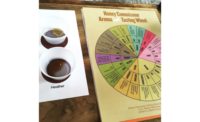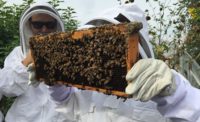On Thursday, November 5, the Snack Food & Wholesale Bakery editors were able to attend the National Honey Board's 2020 Virtual Honey Editors Summit. We also attended this event in 2016; this year it was obviously virtual, but editors received eight different varieties of honeys to try at home, along with some snacks that had honey in them.
Honey sales are up 18 percent as compared to 2015, and it's the #1 category in the beer industry, too. 2019 brought many new honey product introductions, especially because, when polled, 80 percent of consumers said they are trying to limit or avoid sugars.
We learned that the earliest evidence of honeybees was found to be 100 million years ago in Patagonia, and that honey has thousands of varietals, which are dependent on where bees forage for nectar. There are actually over 300 varieties of honey in the U.S., and it takes four days for a honey bee egg to hatch a larva. Bees will visit 20,000 flowers over the span of their lifetimes, and each bee will fly about 500 miles before it dies. Bees also have two stomachs: its regular stomach, and a secondary stomach, also known as the "honey sac."
It's also next-to-impossible to produce organic honey in the U.S., because all of the lands around where the bees live have to have organic land as well (i.e., not treated with any pesticides, etcetera).
Editors tasted Orange Blossom, Buckwheat, Alfalfa, Hawaiian Lehua, Acacia, Eucalyptus, Sourwood, and Meadowfoam varieties of honey, with Meadofoam being the rarest; the only place that is grows is Willamette Valley, Oregon.
Thanks again to the National Honey Board for hosting this event!







